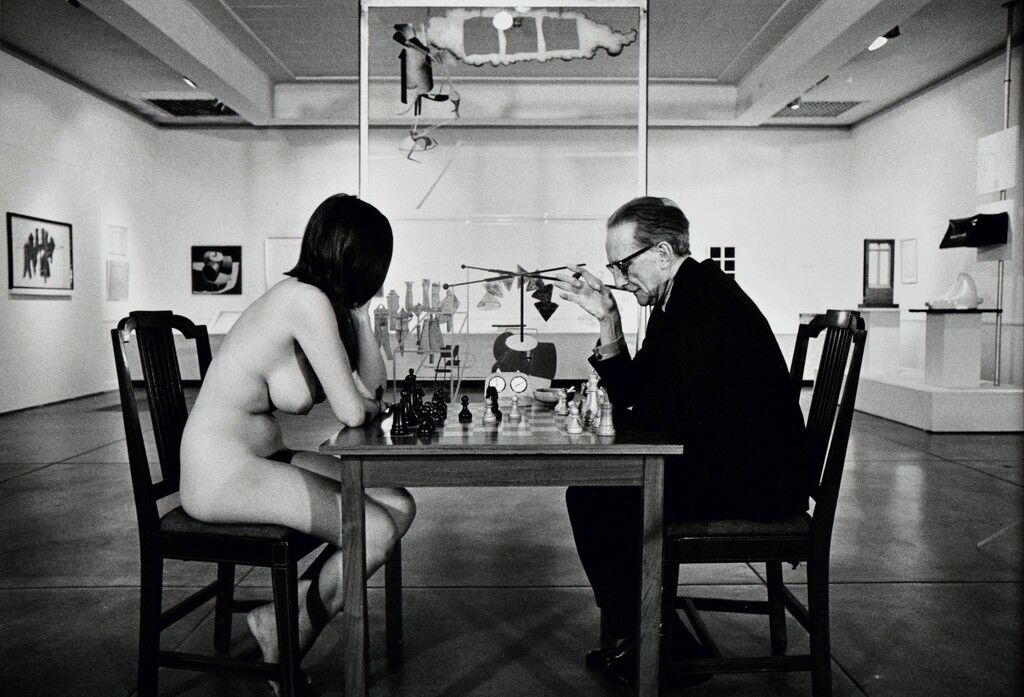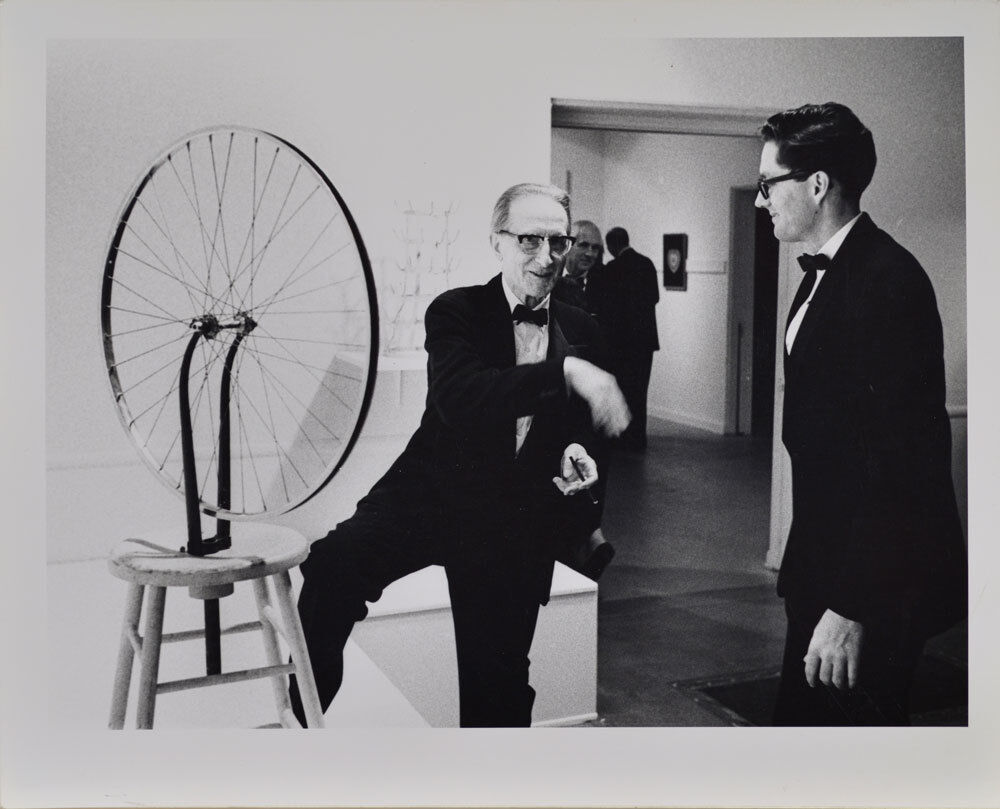Art
Why Marcel Duchamp Played Chess with a Naked Eve Babitz
If you knew absolutely nothing about art or literature,
’sphotograph of
and writer Eve Babitz playing chess would still be a knockout. In the black-and-white picture, made in 1963, a nude, buxom Babitz and a black-suited Duchamp sit at a wood table in an art gallery, manipulating pawns and rooks. The image’s deadpan humor comes from the subjects’ incongruity, as well as their scrupulous attention to the game—neither seems aware of her nakedness.
For fans of Duchamp and Babitz, the photographs capture the meeting of two brilliant minds: the father of
, responsible for putting a urinal in a gallery and proclaiming it sculpture; and the writer who captured the glitz of mid-20th-century Los Angeles in sparkling, singular prose. The backstory to Wasser’s photo shoot is both tantalizing gossip and crucial cultural history.

Marcel Duchamp
Musée National d'Art Moderne, Centre Georges Pompidou, Paris
When the pictures were made, Babitz was a 20-year-old student at Los Angeles Community College. The daughter of a violinist and an artist, and the goddaughter of Russian composer Igor Stravinsky, Babitz was already at ease in a sophisticated, aesthetic milieu. She integrated herself into L.A.’s slowly burgeoning art scene, partying with
,
,
, and the men who’d become integral to the California
movement:
,
, and
. Years later, she also became romantically involved with both
and his brother. Babitz fully embraced her role as an art groupie.
Through this cast of characters, Babitz met Walter Hopps, a rising art-world macher. He founded Los Angeles’s first major gallery, Ferus, in 1957, then left to become a curator at the Pasadena Art Museum—now the Norton Simon Museum. (He left his gallery in good hands, though—his successor, Irving Blum, gave
his first solo show in 1962.) In the early 1960s, Hopps, who was married to art historian Shirley Nielsen, began an affair with Babitz.
Hopps hadn’t yet turned 30, but he was already instituting a radical, ambitious program at the museum. He decided to mount Duchamp’s first American retrospective, and include over 100 artworks. At the time, Duchamp had long been out of the public eye. He had gained fame in the 1910s for his concept of the “readymade”—found objects such as a bicycle wheel or snow shovel presented as art. Yet in 1923, he proclaimed that he was abandoning artmaking in order to play chess. Two decades later, he began work in secret on an enigmatic masterpiece, Étant Donnés (1946–66). When the show ran, he was—at least publicly—a retired artist in his mid-seventies.
Babitz claims that she didn’t receive an invite to the exhibition’s opening part at the Hotel Green because Hopps’s wife was in town, but even Babitz’s 17-year-old sister, Mirandi, got to attend—and photographer Julian Wasser drove her to the fête. Seething with envy, Babitz wanted to take revenge on her paramour. Wasser, who was known for taking nude photographs of young female Angelenos, suggested a titillating form of retribution: playing chess at the museum, in the buff, with Duchamp.
Babitz told the Archives of American Art that the proposition seemed “like the best idea I’d ever heard in my life.…I mean, it was, not only was it vengeance, it was art.” Lessening her own inhibitions, perhaps, was the fact that Wasser had already shot her naked, at her own command: In the pre-iPhone era, she’d requested and received sexy snapshots to share with men.
Wasser coordinated the photo shoot without alerting either the museum or Duchamp about his intentions. Babitz’s performance took place before the museum opened, so her audience was the teamster staff “marching back and forth with big pieces of art,” as she once explained. During the game, Babitz and Duchamp discussed her godfather, Stravinsky, and his famous 1910 suite, The Firebird. Duchamp won their games as Wasser clicked his shutter. Eventually, Hopps walked into the gallery and was so surprised that his Double Mint gum fell out of his mouth. According to Babitz, he began returning her calls after the incident.
Wasser showed Babitz the proofs, and she ultimately selected one in which she was turned away from the camera, her face obscured by her bobbed hair. At first, she wanted to conceal her identity from the public, though she eventually opened up about her participation in the famous photograph. The choice, as Lili Anolik points out in her Babitz biography, Hollywood’s Eve (2019), gives the picture additional strangeness as it simultaneously depicts shyness and exhibitionism, a plea for both attention and anonymity.
Anolik writes that Babitz “wasn’t just model and muse, passive and pliable, but artist and instigator, wicked and subversive.” As Babitz told her biographer, “Walter thought he was running the show, and I finally got to run something.”Throughout the following decades, she published seven books. Both her fiction and non-fiction glistened with memoristic detail about her Hollywood surroundings, passionate love affairs, and colorful friends. Without help from Wasser’s framing or Duchamp’s fame, Babitz harnessed the power of her sexuality and fearlessness into art that was all her own.
Alina Cohen is a Staff Writer at Artsy.






No comments:
Post a Comment